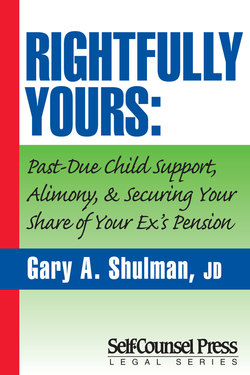Читать книгу Rightfully Yours - Gary A. Shulman - Страница 17
На сайте Литреса книга снята с продажи.
2. Horror Story No. 2
ОглавлениеMary Owens was divorced from Bob in 1991. In their separation agreement, Mary was awarded $100,000 from Bob’s 401(k) plan through his employer. Mary thought that when Bob retired, she would receive her share of the 401(k) benefits from the plan. After all, the separation agreement was clear: $100,000 belonged to her. As the years went on after the divorce, Mary lost touch with Bob. She didn’t even know where he lived. Sometime in 1998, Bob quit his job and, unknown to Mary, cashed-out his entire 401(k) plan. When Mary contacted the plan administrator in 1999 to inquire about her share of the 401(k) benefits, she was told that Bob had cashed-out the plan when he quit last year. When Mary said that she was entitled to $100,000 from the plan, she was told that no QDRO was ever submitted to Bob’s employer for review and approval. As a result, when Bob applied for a distribution of his 401(k) benefits, the company had no choice but to pay Bob all of the benefits accumulated under the plan. Is Mary out of luck? Unfortunately, the answer is yes. Once the company made the total distribution to Bob in accordance with the terms of their own plan, it is certainly too late to submit a QDRO now. There are no more funds remaining in his account. A QDRO today would accomplish nothing. What are Mary’s options now? She could sue her divorce attorney for malpractice for not preparing a QDRO in a timely manner. Alternatively, she could pursue Bob, either directly or through a lawsuit, to reclaim her share of the 401(k) benefits. Either choice could prove to be difficult and expensive.
If Mary had only heard of the term QDRO, she would be $100,000 richer today. And to make matters worse, she also found out that if a QDRO had been prepared when she divorced in 1991, the company would have given her the $100,000 right away. They would not have made her wait for Bob to retire — many companies like to cash-out alternate payees under QDROs as soon as the QDRO is approved, even though the participant is not yet eligible for a distribution. In this manner, they do not have to maintain separate records for alternate payees and trace investment gains or losses over a period of time. Imagine, if Mary had received her $100,000 in 1991 through a properly drafted QDRO and invested it, it could be worth more than $200,000 today.
